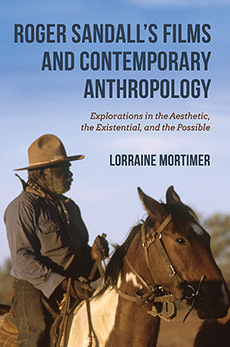If you believed what film freaks were saying in the 1970s, the difference between a photograph of an orange and a photograph of the sun was largely in the cameraman’s head. This wild subjectivism provoked a number of essays about scientific objectivity and mechanical recording devices.
Objective Graphics relates Karl Popper’s epistemological ideas to the development of mechanical substitutes for human sensoria—tape, film, digital imaging, radiography, tomography, cloud chambers, whatever. The last twenty-five years have seen this field hugely expanded.
The Cinema of Witness and Matters of Fact argue for the importance of photographic records of events reliably telling us about the external world—from race meetings, on the one hand, to the exposure of Belsen and Buchenwald on the other.
From an earlier time, an aesthetic impulse owing more to Cézanne than to CAT–scans produced Observation and Identity. This argued that the observation of particulars takes one ever closer to “things in themselves”.
“Objective Graphics”, Art International, January 1978
“The Cinema of Witness: Memories of Death and Deportation from Russia, Ukraine, and the Baltic States”, Visual Anthropology, Vol 6, pages 367–379
“Matters of Fact”, Principles of Visual Anthropology, 2nd Edition, 1995
“Observation and Identity”, Sight and Sound, Autumn 1972

 An Australian writer living in Sydney, Roger Sandall is the author of The Culture Cult (2001), a study of romantic primitivism and its effects. His work has appeared in a number of places including Commentary, The American Interest, Encounter, The New Criterion, The American, Sight and Sound, Quadrant, Art International, The New Lugano Review, The Salisbury Review, Merkur, Mankind, Visual Anthropology, and Social Science and Modern Society.
An Australian writer living in Sydney, Roger Sandall is the author of The Culture Cult (2001), a study of romantic primitivism and its effects. His work has appeared in a number of places including Commentary, The American Interest, Encounter, The New Criterion, The American, Sight and Sound, Quadrant, Art International, The New Lugano Review, The Salisbury Review, Merkur, Mankind, Visual Anthropology, and Social Science and Modern Society.